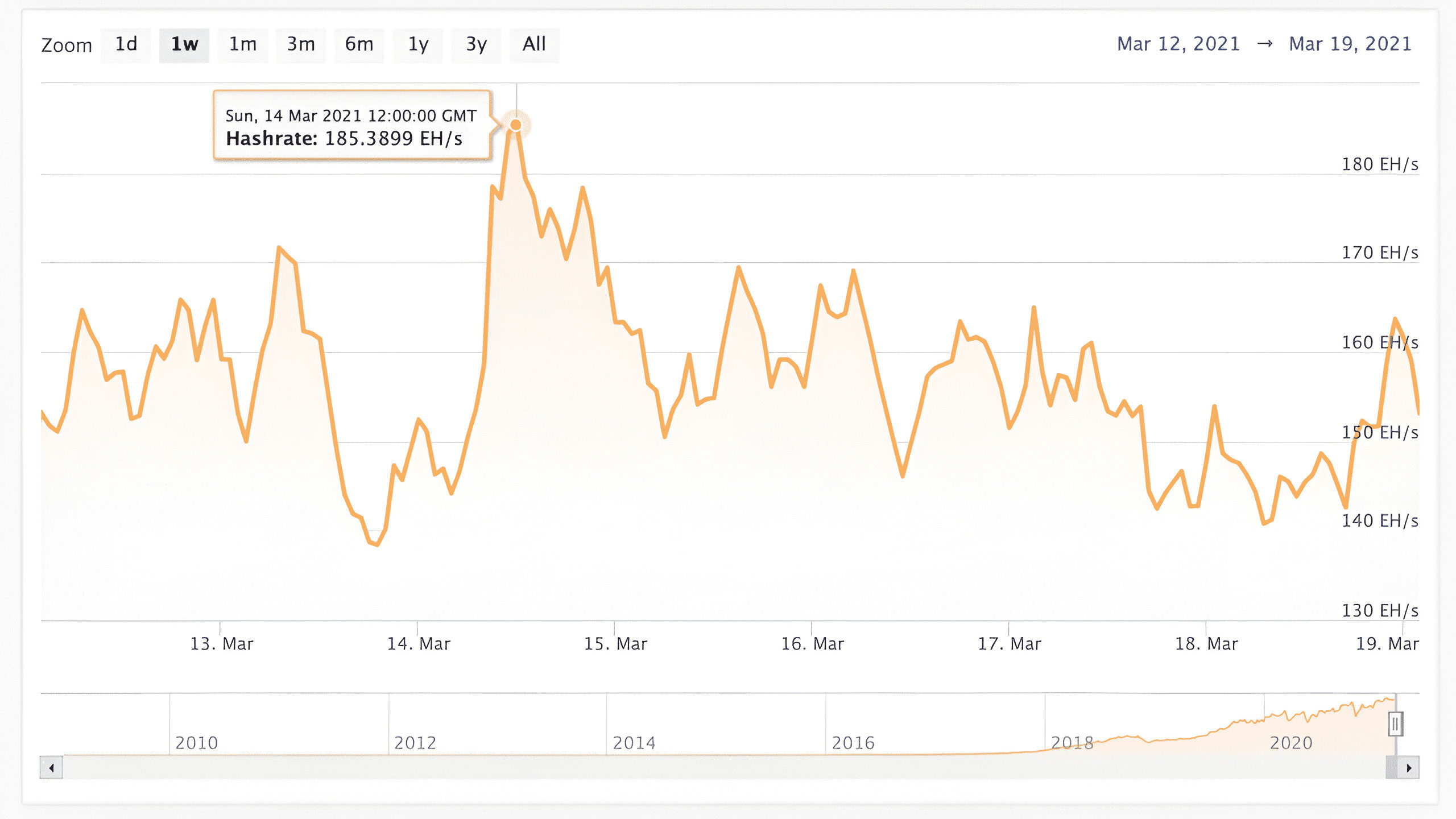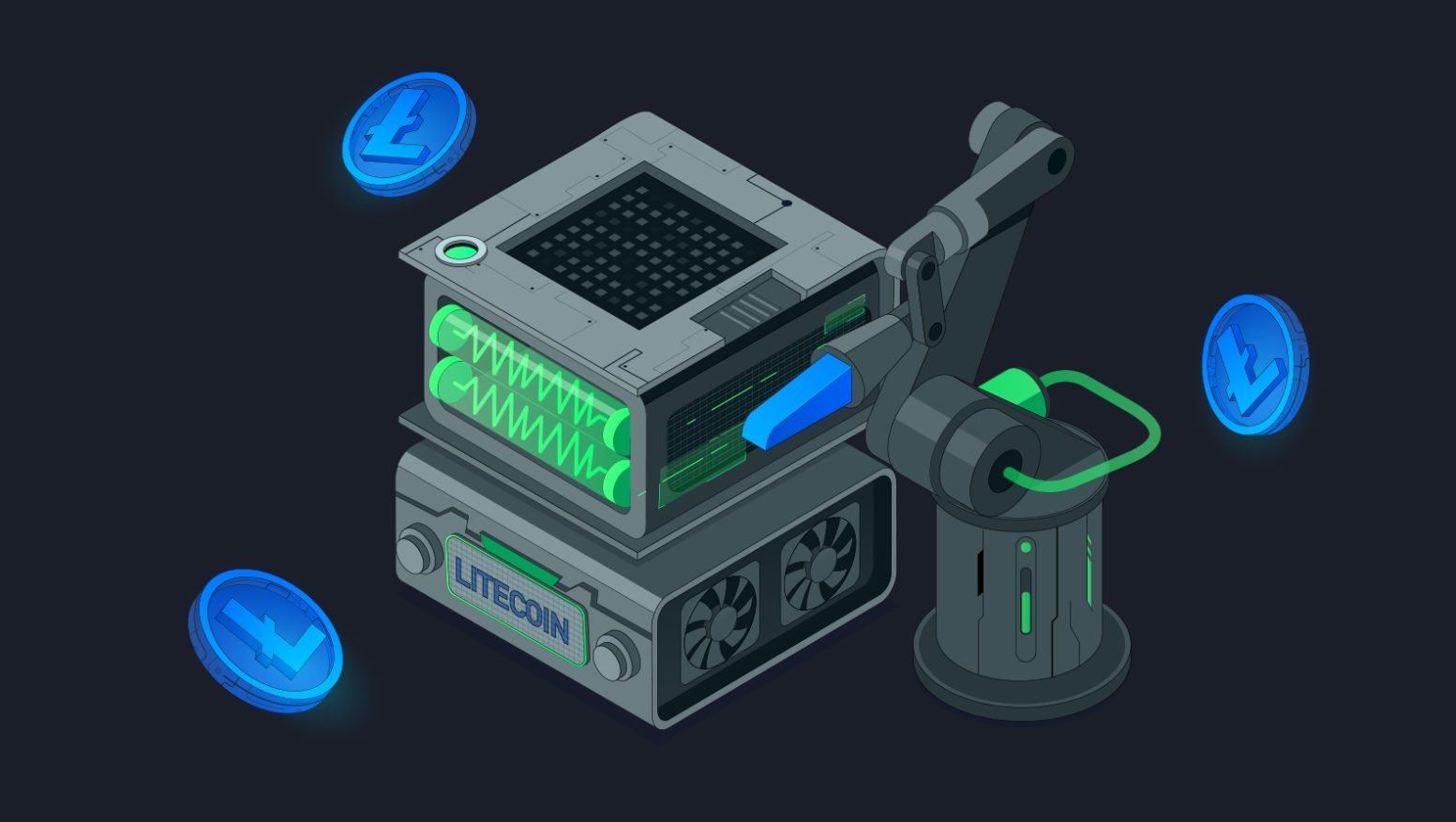Introduction
Bitcoin has become a buzzword in the world of finance and technology. This groundbreaking digital currency has revolutionized the way we think about and use money. At the core of Bitcoin’s success is its decentralized nature and the use of cryptography to ensure security and transparency in transactions.
One crucial aspect of the Bitcoin network is its hash rate. The hash rate, simply put, is the measuring unit of the processing power of the Bitcoin network. It reflects the speed at which miners perform computations to solve complex mathematical problems and validate transactions. The higher the hash rate, the more secure and efficient the network becomes.
Understanding the concept of hash rate is essential for anyone interested in mining or investing in Bitcoin. By grasping its significance and how it affects various aspects of the cryptocurrency ecosystem, you can make informed decisions and navigate the ever-evolving Bitcoin landscape.
In this article, we will delve into the world of Bitcoin hash rate, exploring what it is, how it is measured, and why it is crucial. We will also discuss the factors that influence hash rate, its relationship with mining difficulty, and the implications for Bitcoin miners and the broader cryptocurrency market.
What is Bitcoin Hash Rate?
Bitcoin hash rate refers to the computational power of the entire Bitcoin network. It represents the number of hashes, or calculations, that the network’s miners can perform per second. These calculations are essential for validating transactions and securing the blockchain.
The hash rate is measured in hashes per second (H/s), kilohashes per second (KH/s), megahashes per second (MH/s), gigahashes per second (GH/s), or even terahashes per second (TH/s) for larger networks. Essentially, a higher hash rate indicates a stronger and more secure network.
Miners use specialized hardware, such as high-powered computers or ASIC (Application-Specific Integrated Circuit) machines, to solve complex mathematical problems. These problems involve hashing algorithms, such as SHA-256 (Secure Hash Algorithm 256-bit), which is used in Bitcoin mining.
When a miner successfully solves a problem and finds a valid hash, they add a new block of transactions to the blockchain and are rewarded with newly minted bitcoins. This process is known as mining and is crucial for maintaining the integrity and security of the Bitcoin network.
The hash rate directly impacts the speed at which new blocks are generated and added to the blockchain. A higher hash rate means more blocks are mined, resulting in faster transaction confirmation times. Conversely, a lower hash rate can lead to slower block generation and longer confirmation times.
How is Bitcoin Hash Rate Measured?
Measuring the hash rate of the Bitcoin network requires specialized tools and calculations. Miners and network observers rely on several metrics and techniques to obtain an accurate estimate of the hash rate:
- Network Difficulty: Bitcoin’s network automatically adjusts the mining difficulty every 2,016 blocks to maintain an average block time of 10 minutes. By analyzing the change in difficulty, which is based on the total hash rate, estimates of the hash rate can be derived.
- Block Time: The average time it takes to mine a block can indicate the hash rate. If miners are consistently finding blocks faster than the 10-minute target, it suggests a higher hash rate.
- Miner Statistics: Mining pools, which are groups of miners who work together to increase their chances of finding a block, often provide real-time statistics on their pool’s hash rate. This data can give insights into the broader network’s hash rate.
- Hash Rate Calculators: Several websites and tools provide hash rate estimations based on network difficulty, block time, and other variables. These calculators give users a rough estimate of the hash rate and can be useful for miners and investors.
It is important to note that hash rate measurements are not exact and can vary depending on the mining pool’s size, hardware efficiency, and other factors. Additionally, the hash rate can fluctuate throughout the day as miners join or leave the network.
Overall, measuring the hash rate of the Bitcoin network provides valuable insights into its growth, security, and overall health. It enables miners to gauge their competition, investors to assess the network’s stability, and developers to make informed decisions regarding protocol updates.
Why is Bitcoin Hash Rate Important?
The hash rate of the Bitcoin network plays a crucial role in ensuring the security, stability, and functionality of the cryptocurrency. Here are some key reasons why hash rate is important:
- Network Security: A higher hash rate makes the Bitcoin network more secure against potential hacking attempts. It becomes increasingly difficult for malicious actors to manipulate transactions or create fraudulent blocks when there is a significant amount of computational power dedicated to mining.
- Transaction Verification: Miners with a higher hash rate can process a larger number of transactions and validate them more quickly. This results in faster confirmation times, allowing users to have confidence that their transactions are secure and finalized.
- Network Stability: A high and stable hash rate ensures that the Bitcoin network can handle increased transaction volumes and network congestion. It prevents delays and backlogs in transaction processing, contributing to a smooth user experience.
- Mining Rewards: Miners with a higher hash rate have a greater chance of finding new blocks and earning block rewards. The more computational power they contribute to the network, the more they can potentially earn in newly minted bitcoins.
- Market Perception: The hash rate is often used as an indicator of the overall health and performance of the Bitcoin network. When the hash rate is high and stable, it instills confidence in investors, signaling that the network is secure and reliable.
Ultimately, the hash rate of the Bitcoin network is an essential metric that reflects the collective computational power of miners. It directly impacts the security of the network, the speed of transaction confirmations, and the rewards received by miners. Monitoring the hash rate provides valuable insights into the state of the Bitcoin ecosystem and helps ensure its continued success.
Factors That Affect Bitcoin Hash Rate
The hash rate of the Bitcoin network is influenced by various factors, both internal and external. Understanding these factors can provide insights into the dynamics of the hash rate and its potential fluctuations. Here are some key factors that affect Bitcoin’s hash rate:
- Technological Advancements: The development of more powerful and efficient mining hardware, such as ASIC machines, can significantly increase the hash rate. Miners continuously seek to upgrade their equipment to stay competitive and improve their chances of mining new blocks.
- Electricity Costs: The cost of electricity has a significant impact on miners’ profitability and willingness to participate in the network. Areas with cheap and accessible electricity tend to attract more miners, resulting in a higher hash rate for the Bitcoin network.
- Market Price of Bitcoin: The price of Bitcoin directly affects miners’ incentives. When the price is high, mining becomes more profitable, leading to increased participation and a higher hash rate. Conversely, a significant drop in price may cause some miners to exit the network, resulting in a lower hash rate.
- Network Difficulty Adjustment: The Bitcoin network automatically adjusts the mining difficulty every 2,016 blocks to maintain a constant block time. If the network’s hash rate increases, the difficulty will adjust upwards to maintain the target block time. Conversely, a decrease in hash rate leads to a downward difficulty adjustment.
- Regulatory Environment: Changes in government regulations and policies related to cryptocurrency mining can impact the hash rate. Increased restrictions or unfavorable regulations may discourage miners, leading to a decrease in the hash rate, while supportive regulations can attract more participants.
- Natural Disasters: Natural disasters, such as earthquakes or floods, can disrupt mining operations in affected areas. Power outages, infrastructure damage, or limited access to hardware can cause a temporary decrease in the hash rate until the situation stabilizes.
It’s important to note that the hash rate of the Bitcoin network is a dynamic and evolving metric. Factors such as technological advancements, market conditions, and regulatory changes constantly influence the hash rate. Mining remains a competitive industry, and miners must adapt to changing circumstances to maintain profitability and contribute to the overall hash rate of the network.
The Relationship Between Hash Rate and Mining Difficulty
The hash rate and mining difficulty in the Bitcoin network have a close relationship that ensures the stability and predictability of block generation. Understanding this relationship is crucial for miners and investors alike. Here’s how hash rate and mining difficulty are interconnected:
Bitcoin’s mining difficulty is a measure of how challenging it is to find a valid hash for a new block. The difficulty is adjusted every 2,016 blocks to maintain a target block time of 10 minutes. If new blocks are being mined faster than expected, the difficulty increases to slow down the block generation process. Conversely, if blocks are taking longer to mine, the difficulty decreases to speed up block creation.
The mining difficulty is directly influenced by the hash rate of the network. When the hash rate increases, it means there is more computational power dedicated to mining. To keep the desired block time, the network adjusts the difficulty upwards, making it more difficult to find a valid hash. This ensures that blocks are not generated too quickly, maintaining the integrity and security of the blockchain.
Conversely, when the hash rate decreases, the mining difficulty adjusts downwards. This allows miners to find valid hashes more easily, compensating for the decreased computational power in the network. The aim is to maintain the 10-minute block time, regardless of fluctuations in the hash rate.
The relationship between hash rate and mining difficulty makes Bitcoin mining a self-regulating system. As more miners join the network and increase the hash rate, the difficulty adjusts to accommodate the increased computational power. Similarly, if miners leave the network, the difficulty adapts to ensure that blocks continue to be generated in a timely manner.
The interaction between hash rate and mining difficulty ensures the stability and predictability of block generation in the Bitcoin network. It creates a balance that maintains the targeted block time while allowing for changes in the overall computational power of the network. This mechanism helps to ensure that the Bitcoin blockchain remains secure, and that new blocks are generated at a consistent rate.
How Does Hash Rate Impact Bitcoin Miners?
The hash rate of the Bitcoin network has a significant impact on Bitcoin miners, influencing their profitability, mining rewards, and competition. Understanding how hash rate affects miners is essential for those involved in the mining process. Here’s how hash rate impacts Bitcoin miners:
- Mining Rewards: A higher hash rate increases the competition among miners to find valid hashes and mine new blocks. Miners with a higher hash rate have a greater chance of finding a valid hash and receiving block rewards, which consist of newly minted bitcoins and transaction fees.
- Difficulty and Block Time: The hash rate affects the mining difficulty, which adjusts every 2,016 blocks to maintain a 10-minute block time. A higher hash rate increases the difficulty level, making it more challenging to find valid hashes. Miners need to invest in more powerful and efficient mining equipment to maintain a competitive edge.
- Cost of Mining: A higher hash rate translates to increased electricity consumption and equipment costs for miners. As more computational power is required to mine Bitcoin, miners need to invest in advanced mining hardware and bear higher electricity expenses to keep up with the competition.
- Market Conditions: Miners’ profitability is also closely tied to the market price of Bitcoin. A higher hash rate, resulting in increased mining difficulty, combined with a low Bitcoin price can negatively impact miners’ profitability. Conversely, a higher Bitcoin price can offset the challenges posed by a higher hash rate.
- Network Participation: The hash rate represents the collective computational power of all miners in the network. Miners aiming to make a profit need to monitor the hash rate closely and consider entering or exiting the market based on the level of competition and profitability. Fluctuations in the hash rate can signal changes in miners’ participation.
Ultimately, miners must carefully evaluate the impact of the hash rate on their mining operations. They need to assess the costs of equipment, electricity, and maintenance against the potential profitability driven by the hash rate. Miners with a higher hash rate have a greater chance of earning mining rewards, but they must also contend with increased competition and expenses.
Potential Implications of Changes in Bitcoin Hash Rate
The hash rate of the Bitcoin network can have several implications for various stakeholders, including miners, investors, and the overall cryptocurrency market. Understanding the potential consequences of changes in hash rate is crucial for navigating the dynamic landscape of Bitcoin. Here are some key implications:
- Network Security: A significant increase or decrease in hash rate can impact the security of the Bitcoin network. A higher hash rate enhances network security by making it more difficult for attackers to manipulate transactions or launch 51% attacks. Conversely, a sudden drop in hash rate can expose the network to potential vulnerabilities if the remaining mining power is concentrated in the hands of a few actors.
- Miner Profitability: Changes in the hash rate can directly affect the profitability of Bitcoin miners. An increase in hash rate means increased competition among miners, potentially reducing individual miners’ chances of successfully mining new blocks and earning rewards. Conversely, a decrease in hash rate can create opportunities for remaining miners to earn more rewards with their existing computational power.
- Market Sentiment: Fluctuations in hash rate can also influence market sentiment and investor confidence in Bitcoin. A significant increase in hash rate often signals growing interest and participation in mining, which can be seen as a positive indicator of network health. Conversely, a sudden drop in hash rate may raise concerns and lead to increased volatility in the value of Bitcoin.
- Centralization Concerns: Consistently increasing hash rate concentrated in the hands of a few influential mining pools or entities raises concerns about centralization. Such concentration of power can potentially undermine the decentralized nature of Bitcoin. It highlights the need for efforts to promote a more distributed mining landscape, ensuring a resilient and robust network.
- Innovation and Technological Advancement: Changes in hash rate can also impact the mining industry’s innovation and technological advancements. Higher hash rates incentivize miners to invest in more powerful and energy-efficient mining hardware, spurring innovation in the sector. This pursuit of efficiency drives technological advancements that benefit the entire cryptocurrency ecosystem.
Overall, changes in the hash rate of the Bitcoin network have wide-ranging implications. They affect not only miners’ profitability but also the security of the network, investor sentiment, market volatility, and the broader landscape of cryptocurrency mining. Monitoring and understanding these implications is crucial for all stakeholders to adapt to the evolving dynamics of the Bitcoin ecosystem.
Conclusion
The hash rate is a fundamental metric that plays a crucial role in the Bitcoin network. Understanding what it is, how it is measured, and its impact is essential for miners, investors, and anyone interested in the world of cryptocurrencies.
The hash rate reflects the computational power dedicated to mining in the Bitcoin network. A higher hash rate enhances network security, allows for faster transaction confirmation times, and increases miners’ chances of earning rewards. However, it also presents challenges such as increased competition, higher costs, and potential centralization concerns.
Changes in the hash rate have significant implications for various stakeholders. They can affect the profitability of miners, market sentiment, network security, and even drive innovation in the mining industry. Monitoring and understanding these implications is vital for navigating the dynamic landscape of Bitcoin.
As technology continues to advance and the Bitcoin ecosystem evolves, the hash rate will play a crucial role in shaping the future of cryptocurrencies. Miners will continue to seek more efficient mining hardware, investors will assess the network’s stability, and developers will make decisions based on the hash rate’s impact on the protocol.
By staying informed about the hash rate and its relationship with other factors such as mining difficulty, electricity costs, and market conditions, individuals can make informed decisions about mining, investing, and participating in the Bitcoin network.
In conclusion, the hash rate is not just a technical metric, but a reflection of the collective efforts and computational power that drive the security and efficiency of the Bitcoin network. It is a key factor that contributes to the success and resilience of cryptocurrencies, and understanding its nuances is essential for those involved in the exciting world of Bitcoin.

























